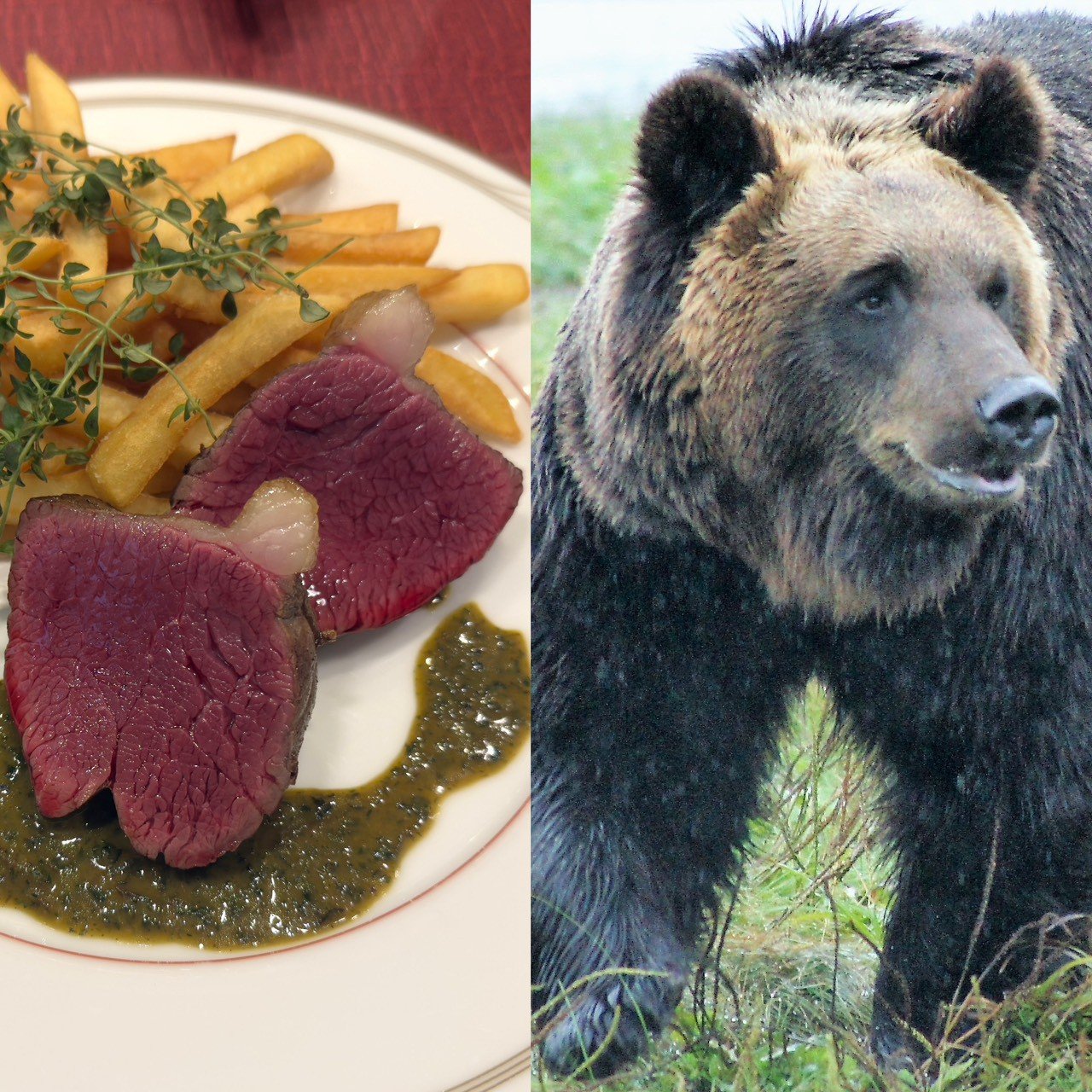
Scientists have recovered ancient molecules of RNA from a juvenile mammoth named Yuka, who died 40,000 years ago in what is now Siberia. These biological remnants are providing insight into the last moments of the extinct ice age creature’s life.
The RNA was extracted from mummified leg tissue that had been extremely well-preserved for millennia in permafrost. It is the oldest RNA to be sequenced by scientists. Now, researchers are using it to reveal which of the mammoth’s genes were active at the time of its death.
“All the cells in an organism, they have the same DNA, a brain cell or a liver cell or muscle cell. So what makes these cells different from each other is essentially the RNA,” said Love Dalén, a professor of evolutionary genomics at the Centre for Palaeogenetics at Stockholm University and the Swedish Museum of Natural History and senior author of the study that published Friday in the scientific journal Cell. “It’s about how which genes are turned on and turned off in different cell types.”
DNA and RNA are found in all living things. DNA is the hard code for life, while RNA reads those genetic instructions and acts as a messenger to help a cell build proteins.
Ancient DNA can last for more than 1 million years and has revolutionized scientists’ understanding of the past.
RNA, however, until recently was thought to be ephemeral, and it’s not yet clear whether the researchers’ novel techniques will work on specimens that are not as exceptionally preserved.

During the research, the team studied 10 samples of frozen mammoth tissue, including muscle and skin, with three yielding fragments of RNA.
Of those, only one produced detailed sequencing data that could reveal how the animal’s genes may have been functioning when it died, the team said. That sample belonged to Yuka, whose body was a found in 2010 in Oyogos Yar in northeastern Siberia.
Within the data, researchers were able to detect messenger RNA molecules, which code proteins, as well as microRNA, which regulates the activity of genes. Together, they revealed some of the “biology that was going on in the cells of this mammoth right before it died,” said Emilio Mármol Sánchez, the study’s lead author and a postdoctoral researcher at the Globe Institute at the University of Copenhagen in Denmark.
“We do hypothesize that this animal was close to death, and this is manifested in the metabolism of the muscle,” Mármol Sánchez said.
The data suggested a “predominance of slow-twitch muscle fibers in the mammoth tissue,” the study noted, adding that the signature might have been the tissue’s “final pulses.” For example, one of the active proteins was titin, related to muscle elasticity, and another was nebulin, involved in the contraction of skeletal muscles.
“The muscle-specific microRNAs we found in mammoth tissues are direct evidence of gene regulation happening in real time in ancient times,” study coauthor Marc Friedländer, associate professor in the department of molecular biosciences at Stockholm University’s Wenner-Gren Institute, said in a statement. “It is the first time something like this has been achieved.”
It makes biological sense that the mammoth’s muscle would have been active at the time of death, said Erez Lieberman Aiden, a professor of biochemistry and molecular biology at the University of Texas Medical Branch, who wasn’t involved in the research.
“You don’t want the first study like this to find a completely shocking pattern,” Aiden said. “The idea that you can detect tissue-specific expression is quite impressive.”
Dalén, who sequenced the world’s oldest mammoth DNA, said the techniques the team pioneered had the potential to open up a new avenue of scientific research into the past.
“These 10 samples are all really good and unique, and only the three best ones worked so on the face of that, it seems rather niche,” he explained. “My gut feeling is that methods will improve. There are lots of labs around the world excited about RNA, and I’m sure we’re going to develop much better methods to recover the RNA.”
The approach, if it can be applied more widely, will offer a way to study the evolution of ancient viruses, many of which only exist in RNA form, such as the virus that causes Covid-19, Dalén said. By sequencing the DNA of ancient bacteria, scientists have been able to study the genetic origins and evolution of bacterial pathogens such as plague and syphilis.
The approach could also be applied to efforts to bring back extinct animals in some form, said Dalén, who is a scientific adviser to the Texas-based biotech company Colossal Biosciences, which aims to “resurrect” the mammoth, dodo and Tasmanian tiger, among others, by editing the genome of their closest living relatives. Doing so would result in hybrid animals that are visually indistinguishable from the extinct species.
“In principle, the methods used here could be a tool that could help Colossal and others to narrow down what genes to edit,” he said.
While the mammoth RNA is the oldest scientists have recovered to date, it’s not the first. In 2023, Mármol Sánchez led a study that sequenced RNA from a 130-year-old Tasmanian tiger, or thylacine, in the Swedish Museum of Natural History in Stockholm.
And in 2019, a team sequenced RNA from the skin of a 14,300-year-old wolf that was preserved in permafrost. Scientists have also detected RNA in the tissue of Ötzi the Iceman, a 5,300-year-old mummy found frozen in the Alps.
Aiden, who has studied mammoth remains, said the paper was a “significant step forward” but it wasn’t yet clear whether it would represent a turning point for the field — or if RNA would, like DNA, become a major reservoir of information about an extinct organism.
It’s like being a guest at a wedding and being asked how happy the marriage will be, he added.
“These moments are a bit hard to judge,” Aiden said.
Sign up for CNN’s Wonder Theory science newsletter. Explore the universe with news on fascinating discoveries, scientific advancements and more.
For more CNN news and newsletters create an account at CNN.com
LATEST POSTS
- 1
 Share your pick for the riding area that characterizes your surf experiences!
Share your pick for the riding area that characterizes your surf experiences! - 2
 Believe Should Unwind? Look at These Scaled down Games
Believe Should Unwind? Look at These Scaled down Games - 3
 Internet Bookkeeping Programming for Consultants
Internet Bookkeeping Programming for Consultants - 4
 アルコールの健康リスク、女性は特に注意 少量で肝硬変の恐れも(毎日新聞)
アルコールの健康リスク、女性は特に注意 少量で肝硬変の恐れも(毎日新聞) - 5
 Investigate the Excellence of Professional flowerbeds: A Virtual Local escort
Investigate the Excellence of Professional flowerbeds: A Virtual Local escort
 Invigorating Spots To Go Kayaking All over The Planet
Invigorating Spots To Go Kayaking All over The Planet 日本男子初3連覇へ 鍵山優真が首位発進 スピン痛恨ミスでまさかの0点に「試合で初めて。やってしまったなと」苦笑いも 佐藤駿が1・91点差で2位(デイリースポーツ)
日本男子初3連覇へ 鍵山優真が首位発進 スピン痛恨ミスでまさかの0点に「試合で初めて。やってしまったなと」苦笑いも 佐藤駿が1・91点差で2位(デイリースポーツ) ソフトバンク東浜巨、国内FA権の行使を決断 通算76勝の生え抜き右腕 チーム一筋13年も…登板機会求めて(西スポWEB OTTO!)
ソフトバンク東浜巨、国内FA権の行使を決断 通算76勝の生え抜き右腕 チーム一筋13年も…登板機会求めて(西スポWEB OTTO!) VPN Administrations for Online Protection
VPN Administrations for Online Protection Shrewd Home Gadgets to Save Energy
Shrewd Home Gadgets to Save Energy The 20 Most sultry Style of the Time
The 20 Most sultry Style of the Time ツキノワグマ串が大バズり 「駆除して食べる」は対策になるのか? 青森の販売元が語った“本当の課題”(集英社オンライン)
ツキノワグマ串が大バズり 「駆除して食べる」は対策になるのか? 青森の販売元が語った“本当の課題”(集英社オンライン) 富山マラソン大会新記録!25歳研修医の守内美結さん「アイデンティティ」と語るマラソンへの思い(FNNプライムオンライン)
富山マラソン大会新記録!25歳研修医の守内美結さん「アイデンティティ」と語るマラソンへの思い(FNNプライムオンライン) 5 Superstar Couples That Motivate Relationship Objectives
5 Superstar Couples That Motivate Relationship Objectives













